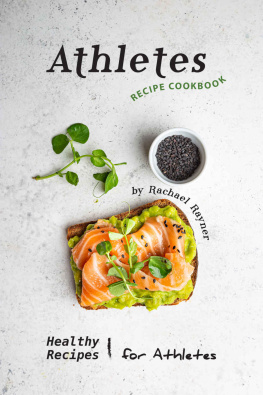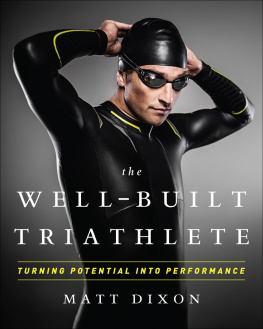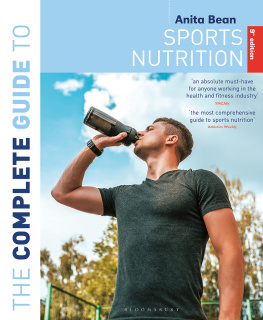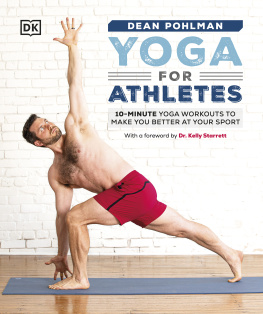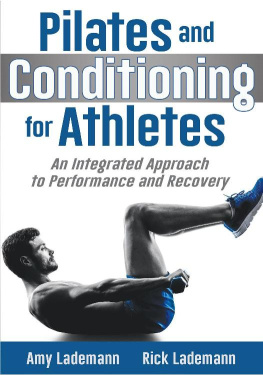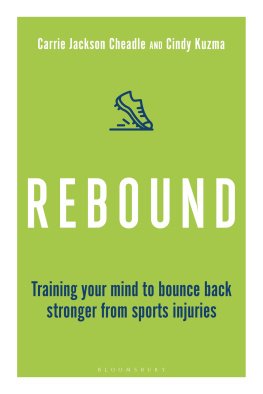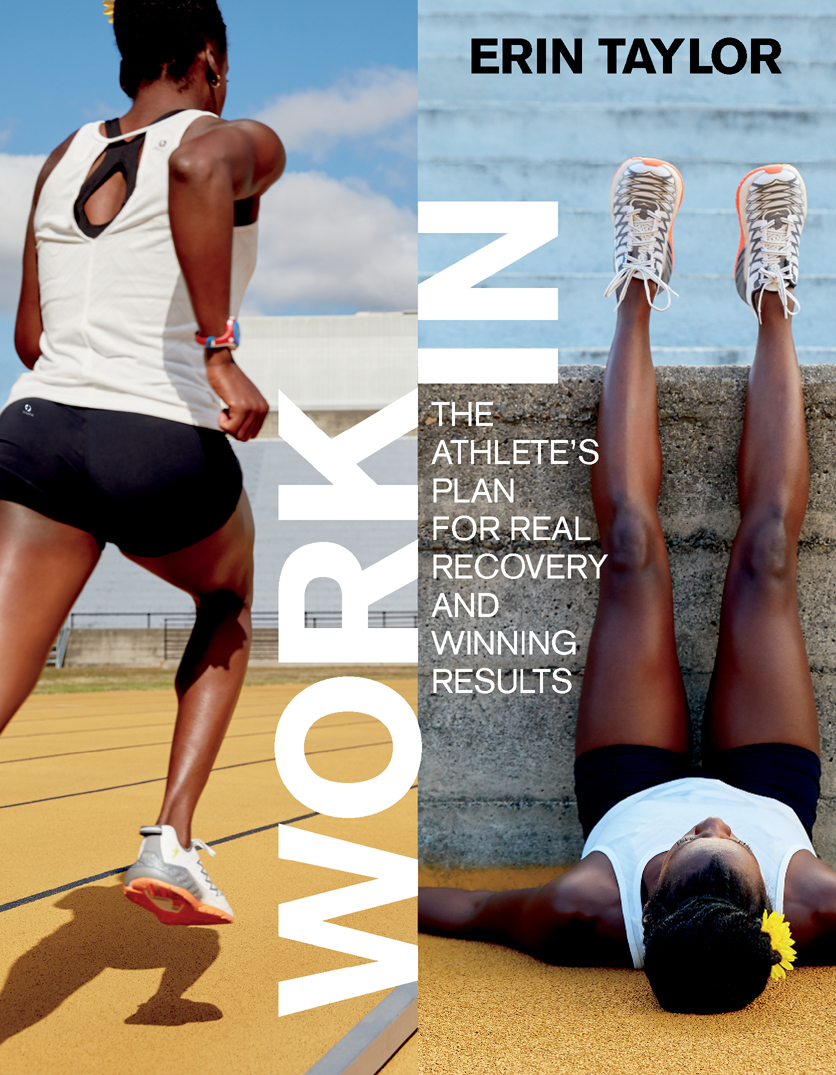

Copyright 2018 by Erin Taylor
All rights reserved. Published in the United States of America by VeloPress.

3002 Sterling Circle, Suite 100
Boulder, Colorado 80301-2338 USA
VeloPress is the leading publisher of books on endurance sports. Focused on cycling, triathlon, running, swimming, and nutrition/diet, VeloPress books help athletes achieve their goals of going faster and farther. Preview books and contact us at velopress.com.
Distributed in the United States and Canada by Ingram Publisher Services
The Library of Congress has cataloged the printed edition as follows:
ISBN 978-1-937715-77-9; ISBN 978-1-948006-02-6 (eBook)
Cover design by Kevin Roberson
Photos by Claire Pepper, except pp. viii and x by Jess Barnard and p. 189 by Sarah Robinson
Womens apparel provided by Oiselle
v. 3.1
A note to readers: Double-tap on images and illustrations to enlarge them. After art is selected, you may expand or pinch your fingers to zoom in and out.
To you, the athletes
CONTENTS
Table of Contents
Guide
The first time I seriously explored meditation and yoga as a way to aid athletic recovery was at a weekend retreat with a yoga teacher known for her expertise in restorative yoga. The room was filled to capacity and the people there werent messing around. The teacher began by acknowledging how difficult these practices are and the commitment required to access the benefits. She guided us to settle in and begin our first meditation. We hadnt gotten 10 seconds into the session when I fartedloud. I couldnt stop laughing. Even my husbandan incredibly good sport who was on a bolster next to meshot me a sideways grin like, What is wrong with you?
As I continued to giggle, I finally became aware of a strong resistance to relaxation. It was limiting me. As a type A athlete, I had long found the concept foreign and counterproductive, and I was laughing out of discomfort because I was struggling to allow myself to recover in a meaningful way. This wasnt a choice; it was a habit. I couldnt switch gears mentally or physically even though I was at a restorative yoga workshop on purpose.
I tried anyway. And on the last day it paid off. After hours of sitting and daydreaming over the course of the weekend, acutely aware of the agitation of my stiff hips and strained back from my workouts earlier that week, I experienced a moment of absolute relaxed clarity like none Id ever felt up to that point. As I sat, my mind and body were completely relaxed and at ease. I was overcome by a feeling of spaciousnessthoughts emptied from my head, and tension released from my body. It felt like I had come home.
That moment forever changed the way I perceive the practice of mental focus and physical relaxation, and it has motivated me to continue. Over the years I have found that the more I practice, the more moments like this I experience, which not only continues to fuel my motivation to practice but also makes me more effective in everything I do.
Whether after work or after a workout, it feels good to come home after a long day or hard effort. For me, working in is the same thing. It helps me come home to myselfrelax back into my bodyso I can gain perspective, absorb my effort, and regather my strength for what lies ahead.
I hope that you too will feel at home in yourself every time you work in. And enjoy all of the wins that result.

Athletes are familiar with going hardafter all, working out gets results. What few are familiar with is resting easyworking in also gets results. When you go hard you have to rest hard, too.
We live in a world where every millisecond matters. As athletes we are goal oriented and highly invested in achievementwe do everything possible to gain competitive advantage and win. Were connected and aware, tracking pace and distance and all available physiological metrics related to performance. We leverage every aspect of preparationfrom personal coaching to high-tech gadgetsin an effort to refine and optimize our output and bring our goals within reach. But even with all the knowledge gained and miles logged, most of us still arent aware how much working in matters. We have all this data about our workout, and in some cases advice about when to stop, but it doesnt tell us what to do next, nor is it tracking our recoveryour work in. And for those looking to stretch the boundaries of their potential, its working in thats the real game changer.
Most athletes know recovery is important. From cooldown routines to meditation apps to self-massage tools, the means to aid the process have gained consideration and adoption in recent years. This is a step in the right direction, but we still lack the practical understanding and skills to recover in a meaningful way. The misconception remains that working out is the only path to increased performance. As a result, recovery is one of the least planned, underutilized tools to optimize performance. Its falsely perceived as a given on rest days and a separate, less important endeavor that happens by default when were not working out.
The reality is that, in sports and in life, recovery is as important and equally as productive as everything else that you do. You need relaxation after exertion. Not only that, when used together in an integrated way, working out and working in will help you become more balanced and resilient and close the gap between where you are now and where you want to be. If youre serious about ayour goals, you should be asking:
- How do I recognize when its time to slow down and allow myself to stop?
- And when I do stop, what should I do?
This book exists to help you answer these questions for yourself, and it is designed to elevate your athletic experience using a simple framework that will help you feel the differenceand step up from bronze to silver, and from silver to gold. Like working out, working in requires an intentional approach. Luckily, you can activate recovery when you need it most and make a real impact in as little as 5 minutes a day.
Use these tools to work in for the win:
TRY IT: Quick tips to help you recharge anytime, anywhere.
WORK IN: Do the routines to optimize your recoveryon purpose.
GET REAL: Become more intentional and effective in your approach by thinking about what youre doing, and why.
Embracing recovery will make you a better athlete. Your body is asking you to work in. Its time to listen and respond.

Ready, set, recover!
Its time to get real about recovery. You might already know that yoga and meditation can help athletic recovery, but the dots have to be connected. You have to do more than go to a yoga class, or close your eyes and set a timer. Youll get very little out of going through the motions of restorative activitieson or off the mat. To optimize recovery you have to reset your perception of rest and break your habit of resisting it.


